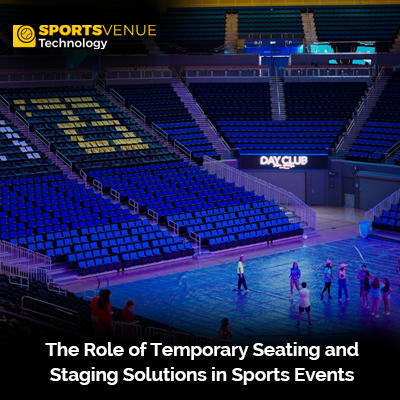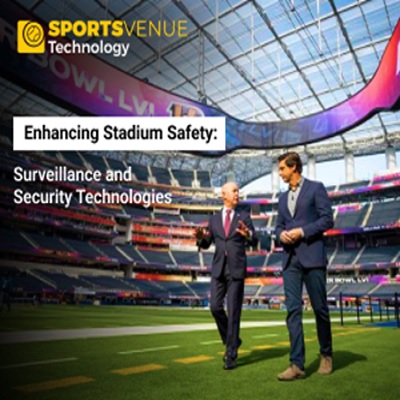The Role of Temporary Seating and Staging Solutions in Sports Events

Introduction
Sports events have evolved beyond mere competitions; they have become cultural phenomena, attracting millions of spectators worldwide. The thrill of witnessing live sports, the electric atmosphere in stadiums, and the communal spirit of fans cheering for their favorite teams are integral aspects of the sports experience. However, to accommodate the growing demand for live events and ensure the comfort and safety of spectators, organizers often rely on temporary seating and staging solutions. In this article, we delve into the significance of temporary seating and staging in enhancing the overall experience of sports events.
Creating Capacity and Flexibility
One of the primary roles of temporary seating and staging solutions in sports events is to create additional capacity. While many stadiums have fixed seating arrangements, they may not always be sufficient to meet the demand, especially during major tournaments or high-profile matches. Temporary seating allows organizers to expand the seating capacity temporarily, accommodating more fans and maximizing revenue opportunities.
Moreover, temporary seating offers flexibility, enabling organizers to adapt the venue layout according to specific event requirements. Whether it's configuring seating for different sports, adjusting capacity for varying attendance levels, or creating VIP areas, temporary solutions provide the versatility needed to optimize space utilization and cater to diverse audience preferences.
Enhancing Spectator Experience
Temporary seating and staging solutions play a crucial role in enhancing the spectator experience at sports events. By providing additional seating options, organizers can ensure that more fans have the opportunity to attend live matches, fostering a sense of inclusivity and community engagement. Whether it's families, groups of friends, or passionate supporters, temporary seating allows diverse audiences to come together and share in the excitement of the game.
Furthermore, these solutions enable organizers to create unique viewing experiences, such as elevated platforms, premium seating areas, and corporate hospitality suites. By offering different tiers of seating options, sports events can cater to varying preferences and budgets, allowing fans to choose the experience that best suits their needs. This not only enhances the overall enjoyment for spectators but also contributes to increased ticket sales and revenue generation for organizers.
Ensuring Safety and Compliance
In addition to capacity and comfort, safety is paramount in sports events. Temporary seating and staging solutions must adhere to strict safety standards and regulations to protect spectators and participants alike. From structural integrity to crowd management protocols, organizers must ensure that temporary structures meet all necessary requirements and certifications.
Moreover, temporary seating solutions should be designed to withstand various weather conditions and potential hazards, such as strong winds or seismic activity. Robust engineering and thorough risk assessments are essential to mitigate any potential risks and ensure the safety of everyone involved.
Facilitating Venue Transformation
Sports venues often serve as multi-purpose facilities, hosting a wide range of events beyond traditional sports competitions. Temporary seating and staging solutions play a vital role in facilitating venue transformation, allowing organizers to adapt the space for different purposes efficiently.
For example, a stadium that hosts football matches during the season may need to accommodate concerts, festivals, or corporate events during the off-season. Temporary seating can be installed and removed quickly, enabling seamless transitions between different types of events. This versatility maximizes the venue's utilization and revenue potential while catering to the diverse needs of organizers and event planners.
Supporting Sustainability Initiatives
In recent years, there has been a growing emphasis on sustainability in the events industry, including sports events. Temporary seating and staging solutions offer opportunities to incorporate sustainable practices into event planning and execution.
For instance, reusable and recyclable materials can be used in the construction of temporary structures, minimizing waste and environmental impact. Additionally, innovative design strategies, such as modular seating systems and energy-efficient lighting, can further enhance the sustainability credentials of sports events.
Furthermore, temporary seating solutions can be designed with future reusability in mind, allowing components to be repurposed or relocated for other events or venues. By embracing sustainable practices in temporary infrastructure, sports events can reduce their carbon footprint and contribute to broader sustainability goals.
Conclusion
Temporary seating and staging solutions play a crucial role in the success of sports events, providing organizers with the flexibility, capacity, and safety they need to deliver memorable experiences for spectators and participants alike. From expanding seating capacity to enhancing spectator comfort and supporting venue transformation, temporary solutions enable organizers to optimize event logistics and maximize revenue opportunities.
Moreover, by incorporating sustainable practices into temporary infrastructure design and implementation, sports events can align with broader sustainability initiatives and minimize their environmental footprint. As the sports events industry continues to evolve, temporary seating and staging solutions will remain essential tools for creating immersive and inclusive experiences that resonate with fans around the world.





